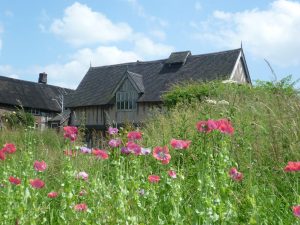From mid-April, the sunshine and the easing of lockdown restrictions to the ‘rule of six’ brought our garden gang onto the site. They cleared two years of weeds from the large quadrant beds by the arbour and removed overgrown plants from the circular beds. We shall now watch to see which herbs have seeded themselves and start to germinate as the soil warms up.
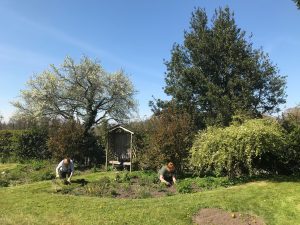
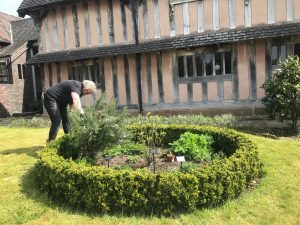
Mole hills that have accumulated over the last few months were sieved. This is always an exciting task. You never know what will appear. This spring, among the artefacts that are usually excavated by the moles, were some unusual ones; glass cullet, a strangely glazed pottery sherd and an unbroken bowl of a nineteenth century clay pipe.
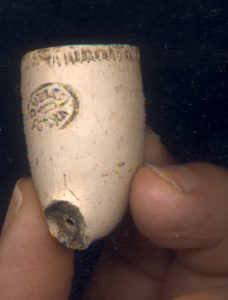
This bowl is not just a plain bowl; ‘Dublin Polka’ is stamped on it. Our archaeologist, Tim Campbell-Green, did some research and discovered that it was an ‘Irish style’ pipe commonly made in the mid to late nineteenth century. They often have Irish names and places on them, possibly to cater for the many Irishmen who had followed the work of the industrial expansion in Britain at the time. The railway line from Manchester to Crewe was completed in 1842. The 1841 census records two ‘Railway Labourers’ lodging in the house, now known as Toad Hall, one of them had an Irish surname. Perhaps it was his pipe that has been in the soil for 180 years before a mole brought it to the surface. Why ‘Polka’? Tim suggests that it’s a common Irish dance that might remind exiled navvies of happier times at home. Imaginative conjecture, but supported by historical facts, a combination of qualities that epitomises The Blackden Trust. The knowledge of the history of the site is still expanding – partly thanks to the moles.
This spring has been an exciting one in the herb garden. Simon and Vicki Worsley, two garden enthusiasts from Goostrey, have joined the garden gang. They have attacked and cleared two years’ growth of ground elder in the largest herb beds. Herbs that had been smothered have reappeared. The wild yarrow extracted from the grass, and identified last August by Barbara Depledge, has survived the winter and is spreading in the herb beds.
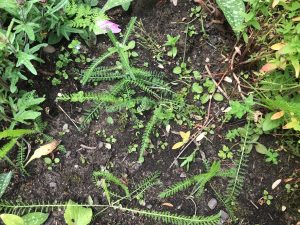
In the other beds, which have been kept under better control, opium poppy seedlings have appeared in large numbers.
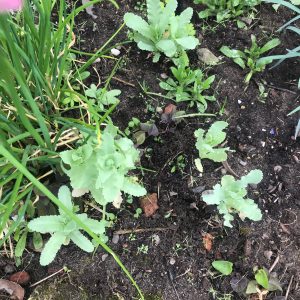
These poppies are important to the history of the site. They were brought here, fifty years ago, in the cracks of the beams of the Old Medicine House and have bloomed erratically ever since. With such a promising start, perhaps this year they will flourish and spread as they did seven years ago.
